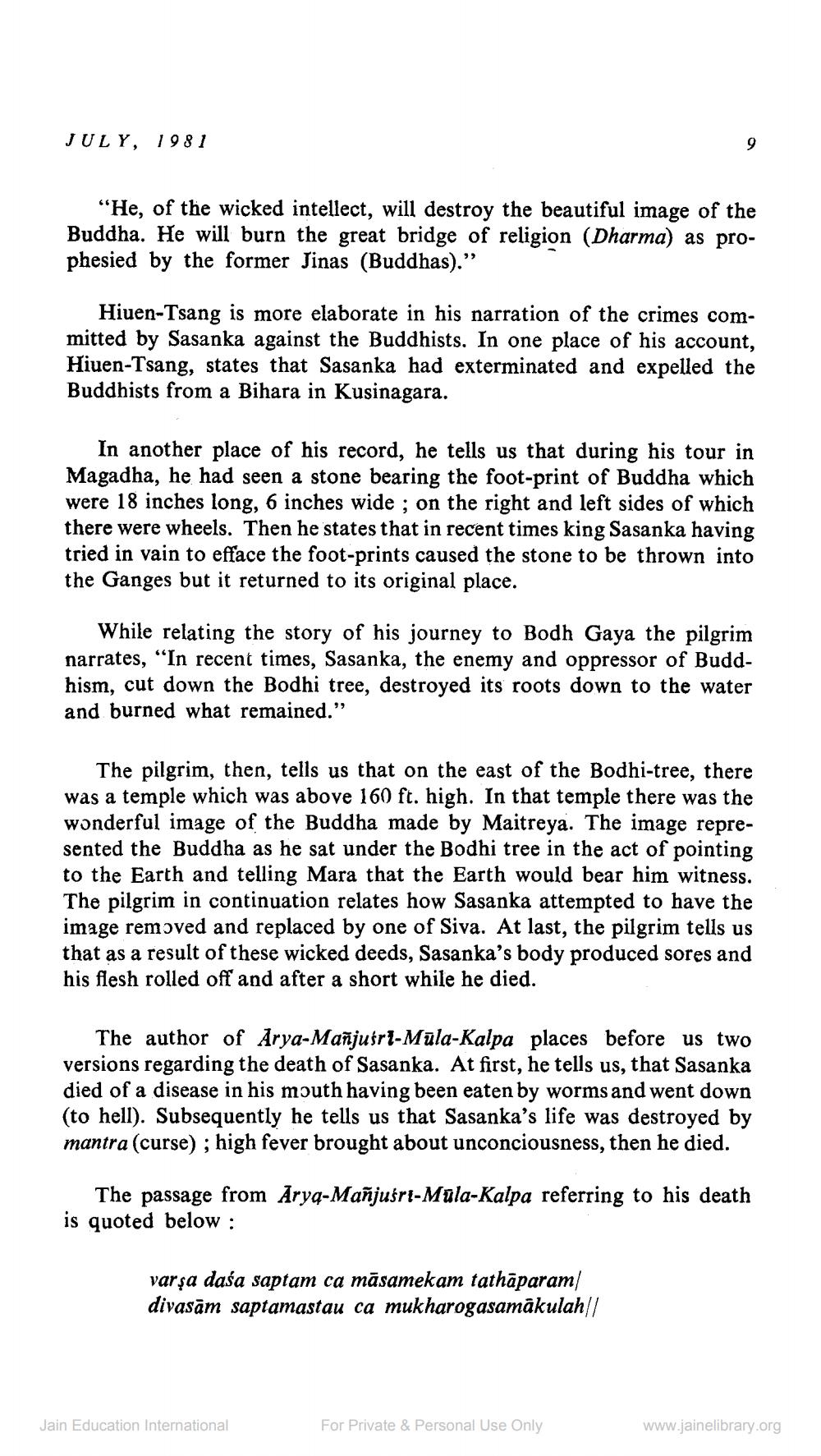________________
JULY, 1981
"He, of the wicked intellect, will destroy the beautiful image of the Buddha. He will burn the great bridge of religion (Dharma) as prophesied by the former Jinas (Buddhas)."
Hiuen-Tsang is more elaborate in his narration of the crimes committed by Sasanka against the Buddhists. In one place of his account, Hiuen-Tsang, states that Sasanka had exterminated and expelled the Buddhists from a Bihara in Kusinagara.
9
In another place of his record, he tells us that during his tour in Magadha, he had seen a stone bearing the foot-print of Buddha which were 18 inches long, 6 inches wide; on the right and left sides of which there were wheels. Then he states that in recent times king Sasanka having tried in vain to efface the foot-prints caused the stone to be thrown into the Ganges but it returned to its original place.
While relating the story of his journey to Bodh Gaya the pilgrim narrates, "In recent times, Sasanka, the enemy and oppressor of Buddhism, cut down the Bodhi tree, destroyed its roots down to the water and burned what remained."
The pilgrim, then, tells us that on the east of the Bodhi-tree, there was a temple which was above 160 ft. high. In that temple there was the wonderful image of the Buddha made by Maitreya. The image represented the Buddha as he sat under the Bodhi tree in the act of pointing to the Earth and telling Mara that the Earth would bear him witness. The pilgrim in continuation relates how Sasanka attempted to have the image removed and replaced by one of Siva. At last, the pilgrim tells us that as a result of these wicked deeds, Sasanka's body produced sores and his flesh rolled off and after a short while he died.
The author of Arya-Mañjuśri-Mula-Kalpa places before us two versions regarding the death of Sasanka. At first, he tells us, that Sasanka died of a disease in his mouth having been eaten by worms and went down (to hell). Subsequently he tells us that Sasanka's life was destroyed by mantra (curse); high fever brought about unconciousness, then he died.
The passage from Arya-Mañjuśri-Mula-Kalpa referring to his death is quoted below:
varşa daśa saptam ca māsamekam tathāparam/ divasām saptamastau ca mukharogasamākulah||
Jain Education International
For Private & Personal Use Only
www.jainelibrary.org




